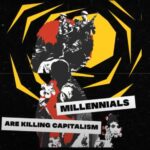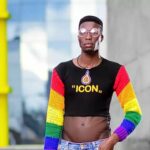Summary: Based on comments delivered on June 6, 2020 to an Another Europe meeting based in London, UK, “America’s uprising: racism, violence, inequality and the far right” — Editors
Link to “America’s uprising: racism, violence, inequality and the far right”
I want to start by lifting up the names of George Floyd, Breonna Taylor, Ahmaud Arbery, Nina Pop, and Tony McDade, who are the recent iterations of racialized and gendered state violence here in the USA. We do this work in their honor and as people who are serious about the radical black tradition. We have always struggled against every form of dehumanization, and this particular uprising is no different. What I will do is explain what is going on, so you are not wondering behind your TV screen what is going on, and what steps are next in the US context. I am in Los Angeles, where the LAPD is one of the most murderous police departments in the country, having killed 601 people in the last 7 years with only 1 conviction.
I will start with the demonstrations Black Lives Matter-LA has organized every Wednesday, without fail, in front of City Hall. The purpose has been to recall our district attorney who failed to prosecute any police officer or hold any police unit accountable. On May 27, that is what the demonstrations started with, but with the events of Minnesota it quickly took a turn. The anger and frustration we all feel bubbled to the top. We occupied the freeway and from that moment on, we witnessed uprisings and rebellions every day.
These protests usually start off very peacefully, with a sense of mourning. Then the police arrive. They use escalation tactics to produce confusion and heighten emotions. For instance, large numbers of riot police arrive and kettle people so they cannot move freely. They use rubber bullets, teargas, and beat down protesters. The worst I ever saw from the police happened on Saturday, May 30. I never saw so many people beaten and so much teargas pervading the air. I do not wish to traumatize anyone, but this is our reality.
This past week, the curfews took effect. For affluent neighborhoods the curfews started at 1PM. This time is set to protect the precious property of the wealthy. What we call for with regard to these curfews and the harassment is a questioning of where the money is coming from to fund this. The City does not run out of rubber bullets or teargas. Yet, as someone who does outreach to our unhoused people, I beg the City for personal protective equipment (PPE) and shelter. I beg for food and unemployment compensation to help our people. There seem to be no resources to help people, but there are always resources to brutalize people.
That is something that becomes visible in this atmosphere. Something else I want to emphasize is that while this is of course an antiracist protest, it is also a working class uprising of people of all colors. This is also an anticapitalist uprising. It is a demand for people to stop being overcome by capital. The graffiti in Beverly Hills is not just “fuck the police,” but it is also down with capitalism and down with white supremacy. We witness people connecting the dots, you see.
I speak about this to many groups. There are always questions about acts of violence and looting. From my vantage point, much of this is strategic. Across the USA, when we see Confederate statues and other symbols of white supremacy taken down, we see that this violence is not thoughtless. It is not hooliganism. We see certain stores purposely targeted for looting. In LA, a neighborhood called The Grove helps the LAPD with many resources. Many businesses there give a lot of donations to the LAPD. Many people therefore target these businesses.
Something else we notice here in the USA is that Black death is overexposed in our society. We think a lot about this phenomenon, where the public must constantly see the broken bodies of Black people, on a daily basis. It makes me wonder if the average person would believe our stories if the videos of our deaths did not exist. This is problematic in many ways. I work with high school students and graduate students who experience massive trauma from the images we see. As a result, among the many of the over-the-top reactions to these atrocities is the idea that since you have seen our corpses again and again, now you can see our righteous rage, our reply to violence.
In our movements, another thing we do is resist the efforts to divide protesters between the “bad” violent protesters and the “good” peaceful ones. We reject the idea that outside agitators are joining us to make us violent, for several reasons. This assumption strikes away our agency and makes the powerful feel as though the average person is, in fact, not angry over the harms inflicted on us. This idea that we are being invaded gives credence to suggestions that we need police to protect us from pernicious outsiders. Another reason we reject this logic is that the concept of “innocent” Black people is used to make other Black folks look guilty, thus inviting state violence against us.
We own this uprising, whatever direction it takes. The neoliberal order cannot do this, as it operates on a logic that if we can protect the “good ones” we are doing a good job and can take credit for the uprising. This cannot be allowed.
Concerning our next steps, we see a massive growth of mutual aid. I started a mini-mutual aid network in response to COVID-19. We observe more mutual aid on the streets. More conversations about prison abolition are taking place. I was part of the original uprisings with BLM in 2014. Back then most of the energy was behind police reform. The fact that police abolition is now discussed in the mainstream and that politicians pander to us is something interesting. That means we are making headway. The main demand now is for police defunding, where we can move resources to areas of caring instead of brutalizing.
Our next move is a rejection of militarism on the streets. With the curfews established, many of us, including me, voluntarily disobey the curfew. We resist being occupied by the police and the military. The great question we pose to the new participants in the movement is why is there not as ferocious a resistance against militarism and imperialism in general. This country is great at exporting this violence overseas. The fact that people in Santa Monica can look out of their windows and see the military outside means something. It forces one to confront some form of imperialism before one’s eyes.
I work from the Marxist-Humanist tradition. I believe we have something at work here that can result in a new humanist society. There is potential here. It is not guaranteed. We may become better or sink into the morass. But, in order to find out, we must keep fighting.






0 Comments